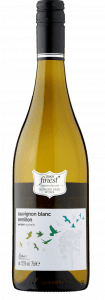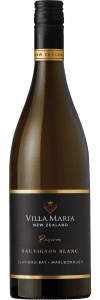Trace the history of popular wine drinking over the last 50 years and several transitions emerge.
The early growth in wine sales often focused on sweet white wines.
Tastes then switched to drier wines but white remained the chosen colour.
Then red wine drinking started to surge – first among men and then with everyone.
Nowadays, it is not uncommon for folk to tell me “Of course, I don’t drink white wine”.
Fear of being perceived as gauche and behind the times seems one reason for that stance.
In fact, though, it is eschewing white wine altogether these days that is behind the times.
Here are four reasons why I think so:
- Producers have become increasingly quality oriented, often harvesting at night so that grapes in hot climates do not start fermenting before they reach the winery.
- Technological progress has brought better controlled fermentation processes and reduced problems with oxidation.
- Newly discovered and revived grape varieties have greatly expanded the flavour ranges and textures available.
- Innovation and experimentation has created a step change in the overall quality of white wines.
It is surely time for “white wine refuseniks” to become a little more open-minded.
Here are six reasons (in bottle format) that I think will smooth the path towards seeing what wonders white wines currently offer.
The selection has been specifically tailored to summer-time drinking.
In the usual way, hyperlinks and pictures are used where possible to help you locate the bottle in question.
First to Australia
2022 Finest Sauvignon Blanc Semillon (£8 at Tesco and 12.5% abv):

Here is a great summer wine made by brilliant Western Australia producers using a successful Bordeaux technique of blending sauvignon with semillon.
Sauvignon provides the aromatics and acidity while semillon adds texture and complexity.
Reflecting those contributions here, typical sauvignon influences bring us lemon and gooseberries flavours and grassiness – all garnished, of course by bright fresh acidity.
Structure and richness join in courtesy of the semillon constituents.
A traditional Sicilian grape
2021 Colpasso Grillo (£8.50 – instead of £10 until 31 July- at Ocado and 13%):

Grillo is a centuries old Sicilian grape used for years in the production of marsala.
As the popularity of fortified wines waned so respect and recognition grew for grillo’s ability to provide fresh, aromatic, terroir driven white wine like this.
Rich and textured, this one has as its heart long, peach, green apple and melon flavours.
These are ably supported by pithy grapefruit acidity with a mineral, sage and fennel savoury undercurrent.
And, of course, New Zealand sauvignon
2022 Villa Maria Reserve Clifford Bay Sauvignon Blanc (£12 – instead of £14 until 25 July at Sainsbury’s and 13%):

Interest has mushroomed in the sub-regions of New Zealand’s Marlborough wine producing area and especially in parts like this wine’s Awatere Valley homeland.
That Valley’s microclimate geology and elevation are thought to be responsible for the intensity, herbaceous character and acidic verve of its wines.
Delicate with fewer aromas than expected, this particular one has ripe apricot and cooked apple flavours.
That foundation is enlivened by sharp lime acidity rounded out nicely by a lingering herb and lemongrass finish.
Less obviously, a wine from Portugal
2021 Quinta da Pedra Alta ‘Pedra a Pedra’ (£12.95 at The Wine Society and 12%):

Just as blending plays a key role in the production of port in Portugal’s Douro Valley, so it is also what makes the region’s (much less well-known) white wines so distinctive.
A major component of this particular blend is the very local rabigato grape which gets its name from the Portuguese word for the tight clusters of grapes so apparent on its vines.
An attractive bouquet opens proceedings here and leads into clean greengage, apple and citrus flavours.
Vibrant acidity is also apparent as is the concluding savoury texture that contains influences as diverse as slate and celery.
Not forgetting Germany
2021 Kochan & Platz Riesling Classic (£14.45 at The Wine Barn and 12%):

To me, an essential feature of summer drinking is riesling – and especially those from the steep sided vineyards of Germany’s Mosel Valley.
Today, though, I have not chosen one of the region’s dry wines but one with a little extra residual sugar that is perfectly suited – with or without food – to sunny summer Sunday afternoons.
Stylish and off-dry, it exhibits intense orange, nectarine and honey flavours.
To remind us of the mineral influences of its source, there is also a slightly salty tang that adds complexity and contrasts neatly with the wine’s zingy sherbet acidity.
Taking albarino upmarket
2022 Lagar de Cervera Albarino (£17.20 at Tanners and 13.5%):

Just as has happened with sub-regions in New Zealand so interest is growing in wines from the albarino grape in different parts of Spain’s Rias Baixus.
This option combines grapes from the traditionally lower alcohol O Rosal region on the Portugal border with those from more familiar and more northerly vineyards.
The result is a distinctive, quality wine that (rightly) attracts a higher price than many entry-point albarinos.
Soft with a lovely creamy texture, it features ripe pear, quince and white peach flavours.
These are engagingly turbo-charged by freshness (reminiscent of yesteryear’s acid drop spangle sweeties) that also supports a sophisticated mace based texture.
A neat little sextet, then, to embellish those summer days – as soon as the warm weather returns.
Retailer Notes.
Several of today’s featured wines are available from retailers that appear regularly on this site but two of them may be less familiar.
Tanners is a widely respected and traditional wine merchants with an extensive list and based in Shrewsbury. Here is a bit about their history.
The Wine Barn is a German wine specialist with a number of excellent wines from this seriously underestimated wine country.
Centred in Winchester but, like Tanners, the Wine Barn also has an online service – but its about us pages tells their story much better than I can.
Tune in again on Monday when value at budget price points is, once more, the theme of my latest Top Tips post.









6 responses
Oh! what a fabulous selection of whites.The Tesco blend is a cracker and the Portuguese white was the best white I tasted at a recent tasting.Pedra is Portuguese for “Stone,” so this is a Stone and Stone wine.
I am fortunate to live near Tanner’s in Shrewsbury,which has a tiny shop front no bigger than my living room with about 20 wines on display.
However when you walk around to the back there is an enormous wine warehouse.They have a branch in Chester and also rows in a very quirky independent supermarket called Stans near Chirk.Well worth seeking out.
Just a little more information on the Portuguese Quinta da Pedra Alta.There are three blocks on the label which represent the cluster of three stones that are the marking points of the boundaries of the vineyards.Hence the reference to stone.
I’ve had that Albariño a couple of times. Waitrose used to stock it. Most certainly a great example of its type and a big cut above the sub £10 versions.
Thanks for those kind opening words, Paul, much appreciated. As you imply, Tanners is a great wine merchant with some excellent wines especially own-label fare. And that albarino is typical of the good choices they sell.
Didn’t spot the significance of that, so thanks for pointing it out.
Yes, I enjoyed it too. It reflects two trends – an increasing interest in the regions within Rias Baixus and the “premiumisation” of the region’s wines. Quality does indeed make a step change as one progresses from the (still great choice) entry-point versions.